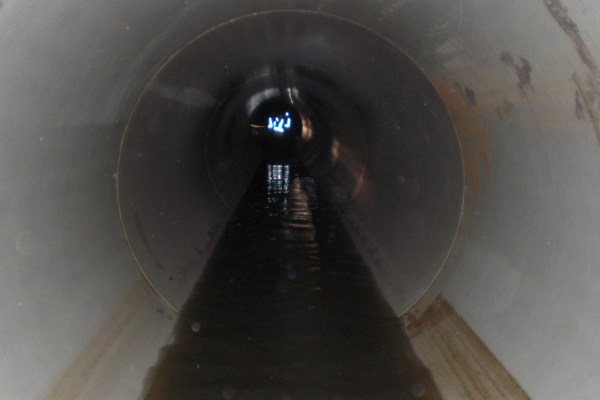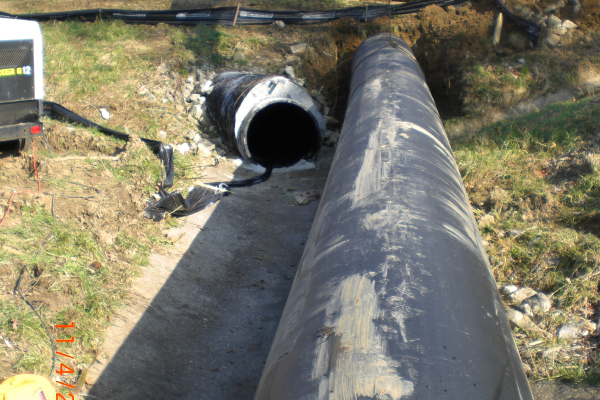Service
Sliplining (reline)

Services
- Rock Boring & Tunneling
- Segmental Tunnel Lining
- Hand Mining
- Auger Boring
- Horizontal Directional Drilling
- Open Cut Excavation
- Pipe Jacking/ Conventional Tunneling
- Sliplining (reline)
- Pipe Ramming
- Pipe Bursting
- Guided Boring
- Box Tunneling
- Microtunneling
- Shaft Excavation
- Cellular Grouting
- Spiral Wound Lining
- Design-Build
- Hydro-Excavation
- CCTV Pipe Inspection
- Shop
- Heavy Haul – MWM Transport
Renewing Existing Lines
One of the earliest and simplest methods of trenchless rehabilitation for existing pipelines, sliplining is a method that involves the insertion of a new pipe into an existing pipe. Used since the 1940s, the process entails pulling or pushing the new pipe into the existing pipe and grouting the annular space. The pipe used may be continuous or a string of individual pipes of a smaller diameter than the original pipe.
This is a very effective, much lower-cost method of improving a damaged or deteriorated pipe compared to replacing it. Similar to its other trenchless rehab counterparts, this technique is effective in the rehabilitation of failing culverts, sewers, and storm drains.
Benefits of Sliplining:
- Proven renewal technique
- Minimal disruption of service and surface traffic
- Far more cost-effective than replacing from scratch
- Results in a new structural pipe

CCFRPM
CCFRPM stands for centrifugally cast fiberglass reinforced polymer mortar pipe — in short, it is a fiberglass pipe. Hobas is one brand name for this material. You can use this product to rehabilitate various sewer systems to extend the life of the original pipe. This product is typically a round pipe but is now available in non-circular shapes in the United States as well.

HDPE
HDPE stands for high-density polyethylene. This material is used in sewer systems to add additional life to an aging system. We have used this product in storm sewers throughout the country. It can be either round or oval in shape and comes in a variety of sizes.

Infrasteel
Infrasteel is a steel pipe used for sliplining inside of existing structures to add life to an existing pipe. It can be made in any number of shapes and sizes.
Work With Us
Are you interested in leveraging Midwest Mole's industry-best services for your project? Drop us a line with some basic information about the job, and we'll get back to you with a pricing estimate as soon as possible.
Get a Quote